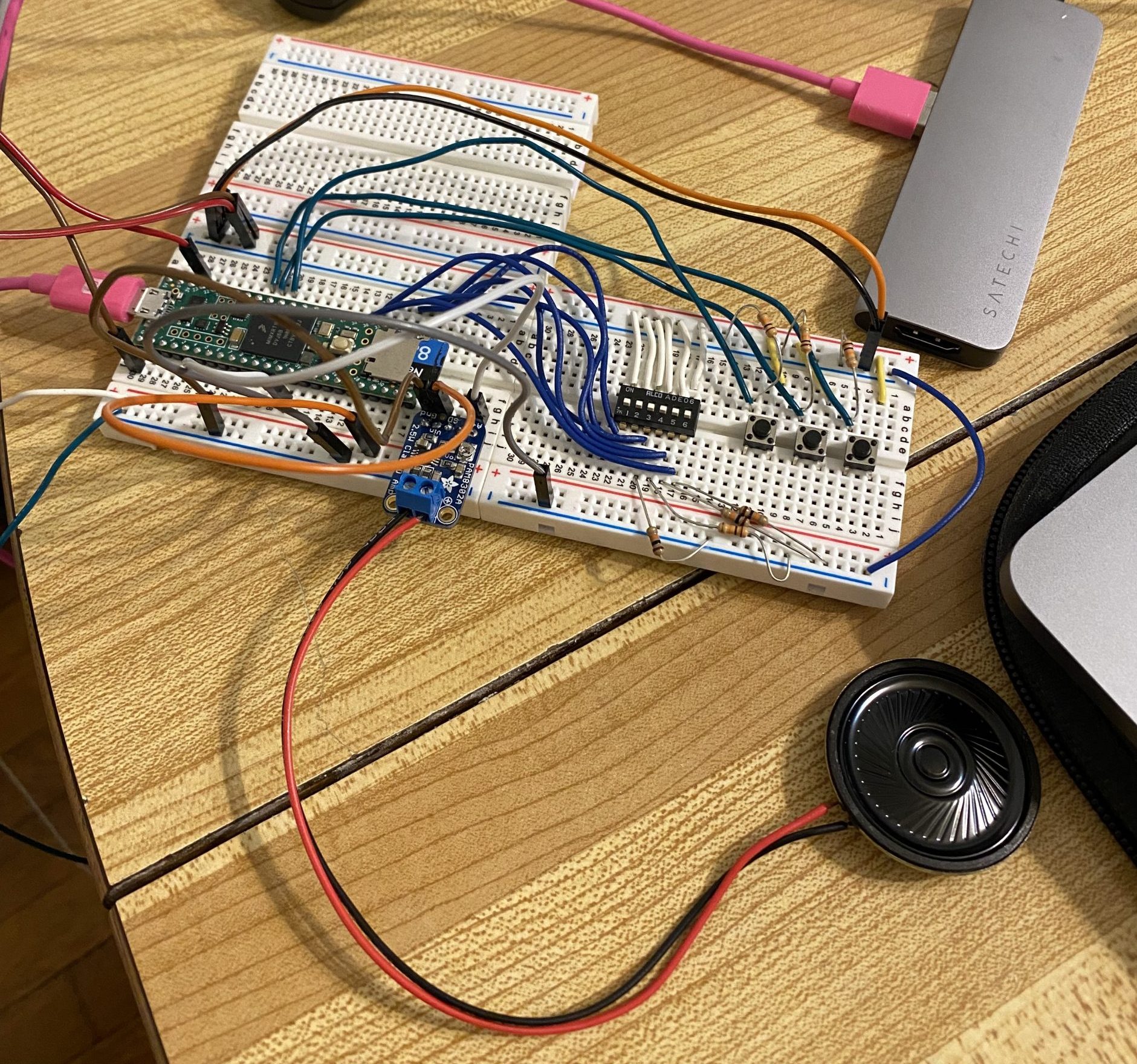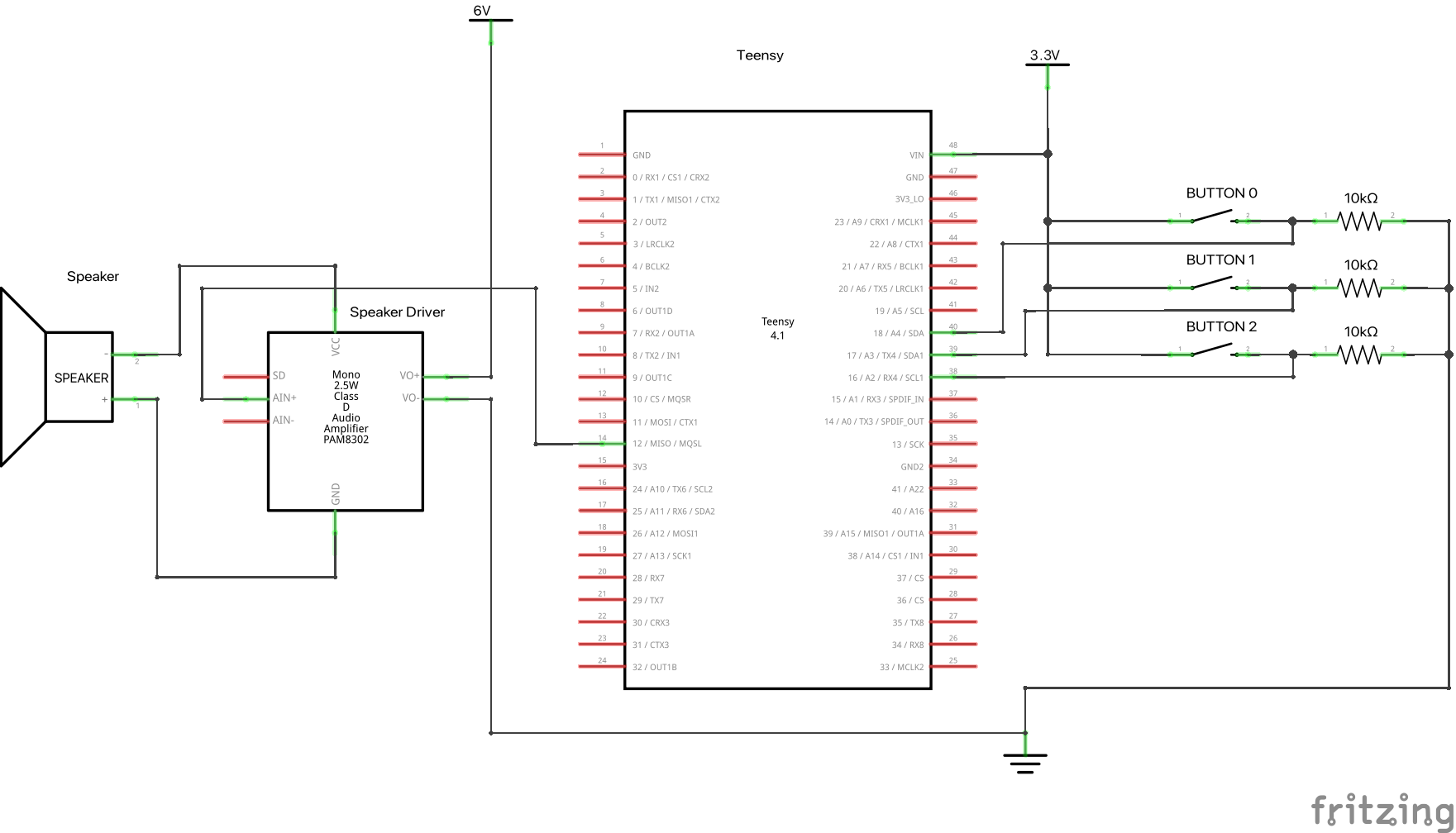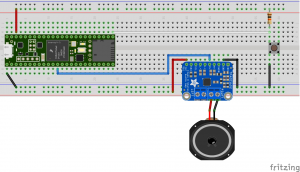Getting sound out of a Teensy
Using MQS is pretty easy, here’s an example:
https://github.com/TeensyUser/doc/wiki/Audio-Example-using-MQS-on-Teensy-4.0-or-4.1
The Teensy can drive a tiny speaker but it’s not very loud. Use the amplifier I distributed to drive a small speaker.
Psychological effects of sound
Is it genetics that cause us to respond to the sound of a crying human baby? Can you think of an “angry” noise? A “happy” noise? a “relaxing” noise?
Experimental / avant-garde sound
Mark Applebaum’s experimental instruments and scoring.
Nikoli Voinov who composed music by drawing on paper, creating animation that made sound.
The Variophone: https://www.youtube.com/watch?v=4r4WqAf-X8Y
Musique concrete using early technology to record and modify sound, including the original soundtrack to “Doctor Who”. Some great examples of recording found sound and reusing it for music.
Some experimental music is a do-over of something from a previous generation. Brian Eno and Robert Fripp “invented” Frippertronics, but people have been experimenting with looped tape for decades.
Live demonstration: https://www.youtube.com/watch?v=kaKgj9DqxhE
Fripp/Eno live performance: https://www.youtube.com/watch?v=xso_RoigibA
Some music you should listen to as background music while you’re doing other tasks. Avant-garde and futurism is a rather wide grouping, like saying “rock” or “country”:
Aphex Twin (Richard James) wants to make music instruments that don’t exist, so he creates them with synthesizers: https://www.youtube.com/watch?v=_AWIqXzvX-U
The Development of Rap/Hip-Hop
Using street technology to change and create new genres of music. Entertainment and environmental sounds can come from other contexts with the use of equipment to record, store, modify, and replay.
Turntables used to create hip hop and the 1.5 hour documentary.
The Orchestral Hit. Please watch all of this as it goes in to early interaction design
The Amen Break. Also watch all of this, it’s not only a great story about a break beat but how to tell a story about music using film/editing techniques.
Rob Base (of Rob Base and DJ EZ Rock https://www.youtube.com/watch?v=phOW-CZJWT0) teaching DJ at The New school: https://www.youtube.com/watch?v=I15WVyhoCHo
Assignment
Assignment 7: sound with meaning


